
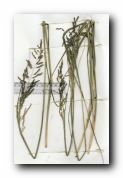
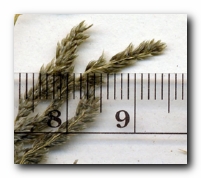
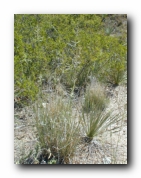
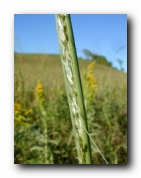
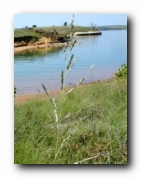
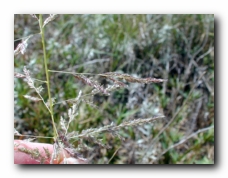
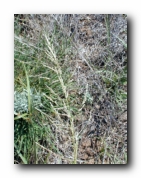
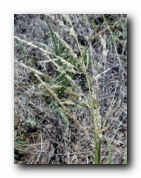
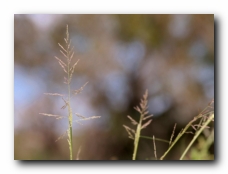
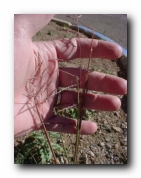
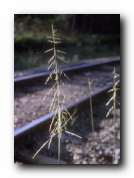
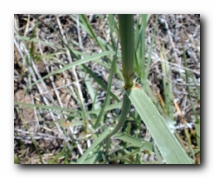
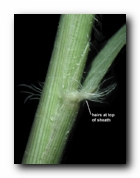
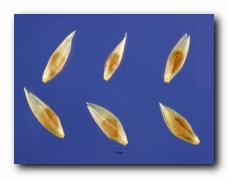
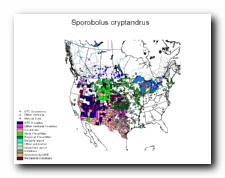
40" Rows:
Broadcast:
0.4 pound pure live seed per acre
1.0 pound pure live seed per acre
Loam:
Clay:
High
Moderate
Low
Habit: Perennial, usually in rather small tufts.
Culms: 40-100 cm. tall, erect, or spreading, sometimes prostrate, glabrous
simple or branching below.
Blades: 6-15 cm. long, 2-5 mm. wide, flat, more or less involute in drying,
tapering to a fine point, glabrous beneath, scabrous above.
Sheaths: Lower shorter than the internodes, the upper much longer, enclosing
the base of the panicle, margins long-ciliate towards the top, with
conspicuous tufts of white hairs at the collar.
Ligule: A ring of very short hairs.
Inflorescence: Panicles terminal and axillary lead-colored or purplish, the
well-developed panicles open, 12-20 cm. long, included at base
in the upper sheath, or sometimes contracted and wholly included,
the branches slender scattered, up to 8 cm. long, bearing
short-pediceled spikelets crowded along the outer part of the
main branchlets.
Spikelets: Pale, purplish or lead-colored, 2-2.5 mm. long, 1-flowered, awnless,
rachilla disarticulating above the glumes.
Glumes: Scabrous on the keel, first glume one third to one half as long as
the second, which is broader and nearly equal to the lemma.
Lemmas: Usually longer than the second glume, 1-nerved, acute.
Palea: 2-nerved, acute, about equaling or a little shorter than the lemma.
Fruit: Grain free from the lemma and readily dropping off.
Habitat: Sandy open soil. August-October.
Use: Forage
Remarks: An abundant element of sand prairies.
Synonyms: Sporobolus cryptandrus (Torr.) Gray ssp. fuscicola (Hook.) E.K. Jones & Fassett
Sporobolus cryptandrus (Torr.) Gray var. fuscicola (Hook.) Pohl
Sporobolus cryptandrus (Torr.) Gray var. occidentalis E.K. Jones & Fassett
Special Notes:
Sand dropseed [Sporobolus cryptandrus] Information #2